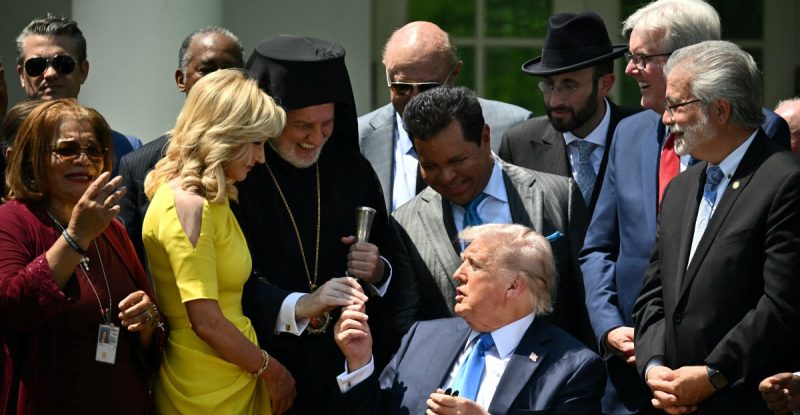
For over six decades, the American ‘religious right’ was a familiar foe: boomer Christian nationalism, straight out of *The Handmaid’s Tale*. Their focus was on traditional values, theological principles, and a theocratic vision of society where religious doctrine dictated secular law. But the rise of Donald Trump has ushered in a new era, a new religious right that’s not only illiberal but fundamentally different, even opposed to traditional religion as we know it.
This isn’t a movement where the state conforms to the church; instead, it’s a twisted relationship where the church bends to the will of American nationalism – a nationalism defined by white, heterosexual, unquestioning loyalty to the nation above all else. This bears less resemblance to the theocratic state of Iran and more to the instrumentalization of the Russian Orthodox Church by the Kremlin, used for propaganda and even espionage.
Trump’s creation of a Religious Liberty Commission, replacing the previous Office of Faith-Based and Neighborhood Partnerships, further exemplifies this shift. The old model saw faith as a balm for society’s moral failings, with churches aiding the state. Trump’s commission, however, presents a different picture: the United States, its history and institutions, become the means by which religion sustains itself. Religious institutions thrive or fail based on their alignment with a narrowly defined ‘American’ identity.
This isn’t merely harmless pandering; the weaponization of ‘religious liberty’ is a significant concern. This term has been invoked to justify discrimination against LGBTQ+ couples, deny women access to reproductive healthcare, and refuse COVID-19 vaccinations. This echoes the tactics of the old religious right, but the MAGA religious right has amplified this strategy to an unprecedented level.
The composition of the Religious Liberty Commission itself is telling. The absence of mainline Protestants is striking, replaced by a coalition of evangelicals, conservative Catholics, Orthodox Jews, and even a select few Muslims – notably, white American converts. This reflects a departure from the old American civic religion dominated by mainline denominations, revealing a new set of values focused on cultural siege rather than shared theology.
This new movement isn’t about returning to a previous state; it’s about radically reshaping American life. Evangelical leaders’ defense of Trump’s sexual transgressions, justifying them through a messianic interpretation of his role, exemplifies this. The inclusion of Ismail Royer, a former member of a terrorist organization, further highlights the movement’s prioritization of political utility over theological consistency.
Royer’s views, alongside those of figures like Eric Metaxas, reveal a focus on a political vision of America above all else. The afterlife receives little attention; the focus is squarely on reshaping society in the present. This resembles the Roman Imperial Cult more than traditional American revivalism, with a focus on the nation’s power and fertility.
Traditional methods of resistance won’t work against this movement. Appeals to theology or conscience are ineffective. However, understanding the differences between this new movement and the old religious right could lead to unexpected alliances. Traditionalist conservative believers, alarmed by the MAGA movement’s actions, could become key allies in the fight against this new religious order.
Ultimately, Trump and MAGA have declared a religious war – not just against secularism, but against traditional religion itself. This isn’t a theocracy; it’s a new, complex, and far more dangerous phenomenon: a religion of nation and identity cloaked in the trappings of familiar faiths. We won’t defeat it with scripture or appeals to conscience. We need to name it, expose it, and forge unexpected alliances with those who, despite their differences, still believe in a higher power than Donald Trump.










